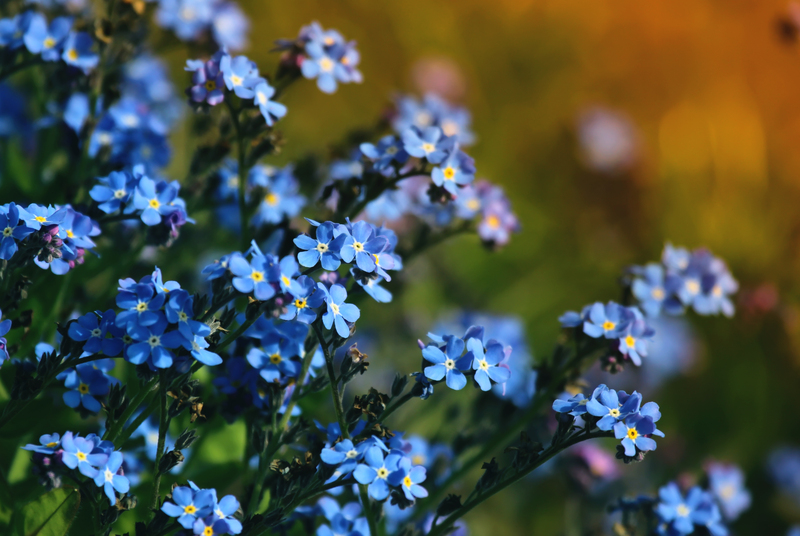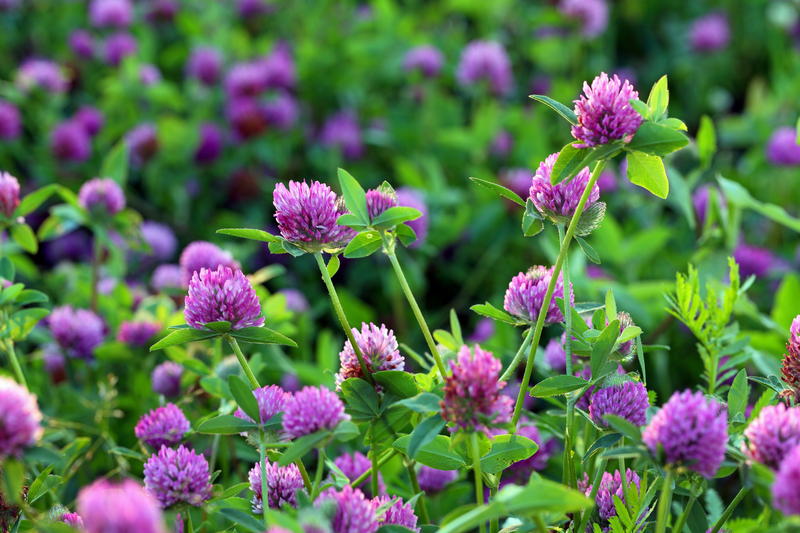Practical Steps for Protecting Your Garden in Winter
Posted on 01/06/2025
Practical Steps for Protecting Your Garden in Winter
As winter approaches, many gardeners wonder how to safeguard their cherished gardens against the challenges brought on by cold weather. Winter poses unique threats--from frost and heavy snowfall to icy winds and sudden temperature drops. Taking practical steps to protect your garden in winter is essential to ensure your plants survive and emerge healthy in spring. This comprehensive guide outlines expert strategies, actionable tips, and proven techniques for winter garden protection.
Why Is Winter Garden Protection Important?
Protecting your garden during winter is more than just preserving aesthetics; it's about maintaining the health and longevity of both landscaping plants and productive vegetable gardens. Freezing temperatures, frost heave, and fluctuating weather can damage roots, kill tender plants, and disrupt soil structure. By employing the right winter garden care steps, you minimize losses and set the stage for vigorous growth when the weather warms up.
- Reduces plant loss from frost and freeze damage
- Prevents soil erosion and nutrient leaching
- Keeps perennials, trees, and shrubs in ideal health
- Limits disease and pest problems during dormancy

Essential Preparations for the Winter Garden
1. Assess Your Garden Before the Cold Hits
The first step in protecting your garden in winter is a thorough assessment. Walk through your garden and inspect plants for signs of disease, damage, or stress. Remove all annuals, clean up debris, and prune away dead or diseased growth. This reduces risks from pests that overwinter in plant litter and prepares your garden for effective winterization.
- Eliminate plant debris, fallen fruits, and leaves
- Check for vulnerable plants and areas prone to ice pockets
- Assess soil drainage and consider improvements if necessary
2. Mulching: An Essential Layer of Protection
Mulching is one of the most vital steps for home garden winterization. A thick layer of mulch insulates soil, maintains consistent temperatures, prevents frost heave, and retains moisture essential for plant roots.
- Apply 2-4 inches of organic mulch (shredded leaves, straw, pine needles or compost) around perennials, trees, and shrubs.
- Leave a gap around plant crowns to prevent rot.
- Use heavier mulches, like wood chips, for wind protection in exposed sites.
Tip: Mulch after the first hard frost when soil has cooled but isn't yet frozen to trap in necessary warmth.
Winter Protection for Different Types of Gardens
Protecting Perennial Beds and Borders
- Cut back perennials to several inches above ground, but consider leaving seed heads for wildlife and winter interest.
- Divide and replant overgrown clumps in late autumn for a head-start next spring.
- Stake taller plants to avoid wind damage during winter storms.
Safeguarding Trees and Shrubs
Trees and shrubs are often overlooked in winter prep, but they're vulnerable to desiccation, windburn, and snow damage.
- Wrap trunks of young trees with tree guards or burlap to prevent frost cracks and rodent damage.
- Tie branches loosely with twine to prevent breakage from heavy snow and ice.
- Apply mulch around the root zone to maintain constant soil temperature.
- Water deeply before the ground freezes to ensure proper hydration.
Caring for Vegetable Gardens and Raised Beds During Winter
Vegetable plots require special attention as they transition from productive abundance to winter slumber.
- Harvest remaining crops before the first hard frost.
- Remove spent plant material and compost disease-free debris.
- Plant cover crops (such as winter rye or hairy vetch) to nurture the soil and suppress weeds.
- Mulch bare soil to prevent erosion and nutrient loss.
- Protect overwintering hardy crops (like kale) with straw or floating row covers.
Winterizing Flower Pots and Container Gardens
Containers are highly susceptible to freeze-thaw cycles that can crack pots and kill roots.
- Move containers to sheltered spots (against walls or into garages/sheds) when possible.
- Use insulating materials (bubble wrap, burlap, or pot sleeves) to wrap pots left outdoors.
- Elevate containers on bricks or pot feet to improve drainage.
- Reduce watering, but don't let the soil dry out completely.
Advanced Measures for Garden Winterization
Installing Windbreaks and Physical Barriers
Cold winds can desiccate plants, especially evergreens and exposed shrubs. Consider temporary structures to defend against harsh weather:
- Set up burlap screens or windbreaks
- Use wooden stakes and garden fabric for sensitive beds
- Protect young trees with fencing from browsing wildlife (deer, rabbits)
Applying Anti-Desiccant Sprays
Anti-desiccant sprays (also called anti-transpirants) form a thin, protective layer on evergreen leaves to reduce water loss.
- Spray on dry, mild days following manufacturer instructions
- Apply to broadleaf evergreens, boxwoods, hollies, and rhododendrons
Snow and Ice Management in the Garden
Snow can act as natural insulation, but excess accumulation may damage branches or smother emerging plants.
- Gently shake snow off laden branches to avoid breakage
- Avoid using salt or chemical deicers near plants (harms roots and soil microbiology)
- Shovel snow to create protective drifts over tender plants if exceptionally cold weather is forecast
Watering and Hydration in Late Fall and Winter
Proper soil moisture is vital before deep winter sets in. Plants, especially evergreens and new plantings, should be well-hydrated to endure the stress of cold and drying winds.
- Water deeply in late autumn before the first freeze
- Check soil moisture during winter thaws, especially in dry regions
- Mulch thickly to help retain ground moisture
Remember: Overwatering can do more harm than good. Only irrigate if the soil is dry and unfrozen.
Pest and Disease Prevention During Winter
Pests and pathogens don't disappear in winter. Many overwinter in plant debris, bark, or soil, waiting to emerge when conditions improve. Take these steps for winter pest management:
- Remove and dispose of diseased plant material
- Clean and disinfect garden tools after use
- Inspect bark for overwintering insects and apply horticultural oil, if needed
- Rotate garden beds annually to minimize pest buildup
Protecting Delicate and Rare Plants
Tender perennials, exotic species, or recently transplanted specimens need extra winter garden protection:
- Cover with frost cloth, garden fleece, or row covers before cold snaps
- Use cloches or cold frames for high-value or early crops
- Bring potted tropicals indoors or into a heated greenhouse
Practical Indoor Garden Care During Winter
For those who love to continue gardening indoors, winter provides an opportunity to nurture houseplants, start seedlings, or grow herbs on a sunny windowsill.
- Increase humidity around indoor plants to combat dry air
- Place pots in bright, draft-free locations
- Water only when necessary, reducing frequency during cool, low-light periods
- Wipe leaves periodically to prevent dust accumulation
Spring Recovery: Preparing for the New Growing Season
As winter wanes and temperatures rise, it's time to reverse some protective measures to welcome a new year of growth.
- Remove excess mulch or covers as soil warms
- Prune shrubs and trees as they show new growth
- Assess for winter damage and replace lost plants
Spring maintenance ensures your carefully protected garden is ready to thrive once more.

Frequently Asked Questions About Winter Garden Protection
Should I fertilize my garden before winter?
Avoid fertilizing late in the season as it can encourage new growth prone to winterkill. Instead, apply a balanced, slow-release organic fertilizer in early spring or after new growth begins.
What is the best mulch for winter protection?
Shredded leaves, straw, and pine needles are excellent insulators. Wood chips work well for pathways or under trees and shrubs, but avoid using them on annual beds or near plant crowns.
How can I protect fruit trees from winter damage?
Wrap trunks with tree guards to prevent sunscald and rodent damage. Prune only dead wood before winter. Use mulch at the base but keep away from direct trunk contact.
Is it necessary to clean up old vegetation?
Yes. Removing diseased and decaying material reduces the risk of overwintering pests and pathogens, setting the stage for a healthier garden in spring.
Conclusion: Build a Resilient Garden This Winter
Protecting your garden throughout winter requires forethought, proactive care, and a touch of creativity. With the right steps, you can minimize cold weather damage and empower your landscape to burst back into color and life come spring. From mulching and physical protection to pest management and early spring recovery, these practical steps ensure your garden remains healthy, beautiful, and productive all year round.
Start planning your winter garden protection today, and you'll be rewarded with lush, thriving plants when warmth returns. For more expert advice and seasonal gardening tips, stay tuned to our gardening blog!

